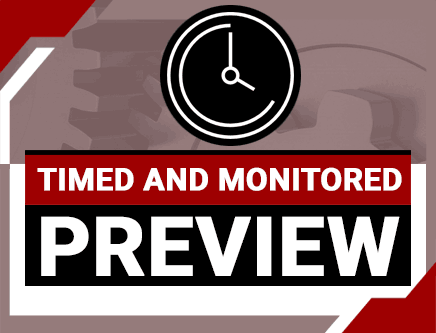Power System Protection: Protective Relay Logic (Ohio Timed & Monitored Video)
Credit: 3 PDH
Subject Matter Expert: Ricardo Romero, P.E.
In Power System Protection: Protective Relay Logic , you'll learn ...
- How to use logic gates in protective relays
- How protective relay functions, such as timers, latches, and edge triggers, work
- How to implement different logic schemes, such as enable/disable functions, permissive tripping schemes, breaker failure schemes, and auto reclosing schemes
Overview

To meet the Ohio Board's intent that online courses be "paced" by the provider, a timer will be used to record your study time. You will be unable to access the quiz until the required study time of 135 minutes has been met.
Credit: 3 PDH
Duration: 135 minutes
This course is about one of the main areas of power engineering: power system protection and control. Power system protection and control ensures the reliable continuous operation of power systems and is, therefore, an essential area of power engineering. In this course, you will learn how to implement digital logic in protective relays. The course is divided into the following sections:
1. Introduction to Protective Relay Logic: we will begin in section 2 of the course by introducing logic gates and how they work. We will also be discussing the order of operation of logic functions and how to develop truth tables to determine the proper operation of logic schemes. We will finish the section by discussing some functions commonly used in protective relay logic: timers, latches, and edge triggers.
2. Applications of Logic in Protective Relays: having defined the fundamentals of relay logic, we will move into developing practical examples in section 3 of the course. We will be taking a look at how to build five different logic schemes: enable/disable switches, permissive tripping schemes, overcurrent blocking schemes, breaker failure schemes, and automatic reclosing schemes.
Specific Knowledge or Skill Obtained
This course teaches the following specific knowledge and skills:
- How to use truth tables to determine protective relay logic operation
- Using logic gates in protective relays
- Practical examples of relay logic
- How to use digital logic in power system protection and control
Certificate of Completion
You will be able to immediately print a certificate of completion after passing a multiple-choice quiz consisting of 15 questions. PDH credits are not awarded until the course is completed and quiz is passed.
| This course is applicable to professional engineers in: | ||
| Alabama (P.E.) | Alaska (P.E.) | Arkansas (P.E.) |
| Delaware (P.E.) | District of Columbia (P.E.) | Florida (P.E. Area of Practice) |
| Georgia (P.E.) | Idaho (P.E.) | Illinois (P.E.) |
| Illinois (S.E.) | Indiana (P.E.) | Iowa (P.E.) |
| Kansas (P.E.) | Kentucky (P.E.) | Louisiana (P.E.) |
| Maine (P.E.) | Maryland (P.E.) | Michigan (P.E.) |
| Minnesota (P.E.) | Mississippi (P.E.) | Missouri (P.E.) |
| Montana (P.E.) | Nebraska (P.E.) | Nevada (P.E.) |
| New Hampshire (P.E.) | New Jersey (P.E.) | New Mexico (P.E.) |
| New York (P.E.) | North Carolina (P.E.) | North Dakota (P.E.) |
| Ohio (P.E. Timed & Monitored) | Oklahoma (P.E.) | Oregon (P.E.) |
| Pennsylvania (P.E.) | South Carolina (P.E.) | South Dakota (P.E.) |
| Tennessee (P.E.) | Texas (P.E.) | Utah (P.E.) |
| Vermont (P.E.) | Virginia (P.E.) | West Virginia (P.E.) |
| Wisconsin (P.E.) | Wyoming (P.E.) | |


 Live support chat
Live support chat


